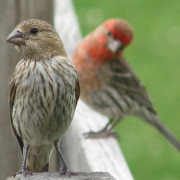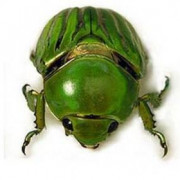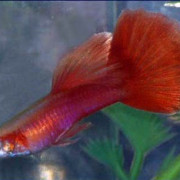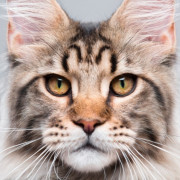Попугай
Содержание:
Taxonomy and naming
The kea was described by ornithologist John Gould in 1856. Its specific epithet, the Latin term notabilis, means «noteworthy». The common name kea is from Māori, probably an representation of their in-flight call – ‘keee aaa’. The word «kea» is both singular and plural.
The genus Nestor contains four species: the New Zealand kaka (Nestor meridionalis), the kea (N. notabilis), the extinct Norfolk kaka (N. productus), and the extinct Chatham kaka (N. chathamensis). All four are thought to stem from a «proto-kākā», dwelling in the forests of New Zealand five million years ago. Their closest relative is the flightless kakapo (Strigops habroptilus). Together, they form the parrot superfamily Strigopoidea, an ancient group that split off from all other Psittacidae before their radiation.
References
- [permanent dead link]
- ^
- Lindsey, T., Morris, R. (2000) Field Guide To New Zealand Wildlife. Auckland: Harper Collins. (ISBN 1-86950-300-7)
- ^
- Gould, J. (1856). On two new species of birds (Nestor notabilis and Spatula variegata) from the collection of Walter Mantell, Esq. Proceedings of the Zoological Society of London, 94–95.
- Simpson DP (1979). Cassell’s Latin Dictionary (5th ed.). London: Cassell Ltd. p. 883. ISBN 0-304-52257-0.
- ^
- ^ Grant-Mackie, E.J.; J.A. Grant-Mackie; W.M. Boon; G.K. Chambers (2003). «Evolution of New Zealand Parrots». NZ Science Teacher. 103.
- Juniper, T., Parr, M. (1998) Parrots: A guide to parrots of the world. New Haven, CT: Yale University Press (ISBN 0-300-07453-0)
- ^
- CRC Handbook of Avian Body Masses by John B. Dunning Jr. (Editor). CRC Press (1992), ISBN 978-0-8493-4258-5.
- ^ Forshaw, Joseph M. (2006). Parrots of the World; an Identification Guide. Illustrated by Frank Knight. Princeton University Press. ISBN 0-691-09251-6.
- ^
- Anderson, R (1986). «Keas for keeps». Forest and Bird. 17: 2–5.
- ^
- ^ Diamond, J., Bond, A. (1999) Kea. Bird of paradox. The evolution and behavior of a New Zealand Parrot. Berkeley; Los Angeles, CA: University of California Press. (ISBN 0-520-21339-4)
- Jackson, J. R. (1962). «The life of the Kea». Canterbury Mountaineer. 31: 120–123.
- ^
- Elliott, G.; Kemp, J. (1999), Conservation ecology of kea (Nestor notabilis), WWF New Zealand
- [permanent dead link]
- Falla, RA; Sibson, RB; Turbot, EG (1966), A Field guide to the birds of New Zealand, Collins, London, ISBN 0-00-212022-4
- ^
- Wallace, Alfred (1889). Darwinism. London: Macmillan and Co. p. 75.
- ^
- ^
- ^
- ^
- Temple, P. (1996) The Book of the Kea. Auckland: Hodder Moa Beckett. (ISBN 0-340-600039)
- ^
Где обитает какапо

Фото: Какапо в природе
Какапо можно встретить только среди островов Новой Зеландии. Большинство особей сохранилось на Юго-западе Южного острова. Какапо селится в тропиках, поскольку его окрас приспособлен к маскировке среди густых зеленых лесов. Человеку сложно найти какапо, поскольку они умело скрываются в кустарниках и высокой траве.
Какапо – единственный попугай, который роет норы. И самцы, и самки имеют свои норы, которые вырывают массивными сильными лапами. Тропическая земля влажная, но даже в редкие периоды засухи попугаю не составит труда разгрести когтями сухую землю.
Для норы какапо выбирают корни деревьев или углубления в кустарниках. Чем укромнее будет место – тем лучше, ведь какапо прячется в своих норах днем. Из-за того, что в течении ночи птица может пройти несколько километров в поисках пищи, она не всегда успевает вернуться к той норе, из которой вышла днем. Поэтому у одной особи какапо, как правило, несколько норок.
Свои норы какапо обустраивают с большим вниманием: туда стаскиваются сухие ветки, травинки и листья. Птица предусмотрительно вырывает два входа в нору, чтобы, в случае опасности, можно было спастись бегством, поэтому норы какапо часто представляют собой короткие тоннели
Для птенцов самки часто устраивают собственную спальню, но иногда и не имея птенцов какапо вырывает две «комнаты» в норе.
Какапо трудно приживаются где-либо, кроме островов Новой Зеландии. Во многом это связано с цветением определенных растений, которые стимулируют начало их брачного периода.
Внешний вид и особенности
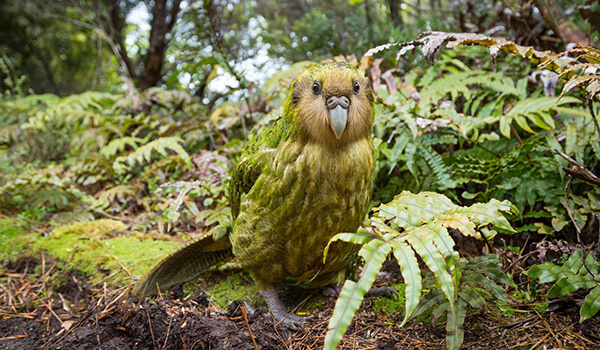
Фото: Попугай какапо
Какапо – крупный попугай, длина тела которой достигает примерно 60 см. Весит попугай от 2 до 4 кг. Оперение преимущественно темно-зеленое с вкраплениями темно-желтого и черного цвета – такой окрас обеспечивает птице маскировку в условиях джунглей. На голове какапо перья преимущественно белые, удлиненные – благодаря их форме птица становится более чувствительной к ближайшим звукам.
Видео: Какапо
У какапо большой серый изогнутый клюв, короткий толстый хвост, короткие массивные ноги с большими пальцами – он приспособлен к быстрому бегу и прыжкам через небольшие препятствия. Птица не использует крылья для полета – он утратил способность летать, отдав предпочтение бегу, поэтому крылья укоротились и стали выполнять роль поддержания баланса, когда птица забирается на возвышенности.
Из-за утраты способностей к полету, скелет какапо отличается по структуре от скелетов других попугаев, в том числе и из семейства Нестеровых. У них маленькая грудина с низким килем, который немного укорочен и выглядит недоразвитым. Таз широки – это позволяет какапо эффективно передвигаться по земле. Кости ног длинные и прочные; кости крыльев короткие, но тоже уплотненные, по сравнению с костьми других попугаев.
Самцы, как правило, крупнее самок, но других отличий друг от друга не имеют. Голос у самцов и самок какапо хриплый, каркающий – самцы кричат намного чаще и их звуки обычно громче. В брачный период такое «пение» может переходить в неприятный визг. Но в большинстве случаев какапо молчаливые и спокойные птицы, которые предпочитают скрытный образ жизни.
Description
Kea in flight
Orange feathers can be seen under the wing during flight
The kea is a large parrot about 48 cm (19 in) long and weighs between 800 grams (1.8 lb) and 1 kilogram (2.2 lb). It has mostly olive-green plumage with a grey beak having a long, narrow, curved upper beak. The adult has dark-brown irises, and the cere, eyerings, and legs are grey. It has orange feathers on the undersides of its wings. The feathers on the sides of its face are dark olive-brown, feathers on its back and rump are orange-red, and some of the outer wing are dull-blue. It has a short, broad, bluish-green tail with a black tip. Feather shafts project at the tip of the tail and the undersides of the inner tail feathers have yellow-orange transverse stripes. The male is about 5% longer than the female, and the male’s upper beak is 12–14% longer than the female’s. Juveniles generally resemble adults, but have yellow eyerings and cere, an orange-yellow lower beak, and grey-yellow legs.
Juveniles have yellow eyerings and cere, an orange-yellow lower beak, and grey-yellow legs
Behaviour
Breeding
Kea chick, Walsrode Bird Park, Germany
At least one observer has reported that the kea is polygynous, with one male attached to multiple females. The same source also noted that there was a surplus of females.
Kea are social and live in groups of up to 13 birds. Isolated individuals do badly in captivity, but respond well to mirror images.
In one study, nest sites occur at a density of one per 4.4 square kilometres (1.7 sq mi). The breeding areas are most commonly in southern beech (Nothofagus) forests, located on steep mountainsides. Breeding at heights of 1,600 metres (5,200 ft) above sea level and higher, it is one of the few parrot species in the world to regularly spend time above the tree line. Nest sites are usually positioned on the ground underneath large beech trees, in rock crevices, or dug burrows between roots. They are accessed by tunnels leading back 1 to 6 metres (3.3 to 19.7 ft) into a larger chamber, which is furnished with lichens, moss, ferns, and rotting wood. The laying period starts in July and reaches into January. Two to five white eggs are laid, with an incubation time of around 21 days, and a brooding period of 94 days.
Mortality is high among young kea, with less than 40% surviving their first year. The median lifespan of a wild subadult kea has been estimated at five years, based on the proportion of kea seen again in successive seasons in Arthur’s Pass, and allowing for some emigration to surrounding areas. Around 10% of the local kea population were expected to be over 20 years of age. The oldest known captive kea was 50 years old in 2008.
Diet and feeding
An omnivore, the kea feeds on more than 40 plant species, beetle larvae, other birds (including shearwater chicks), and mammals (including sheep and rabbits). It has been observed breaking open shearwater nests to feed on the chicks after hearing the chicks in their nests. The kea has also taken advantage of human garbage and «gifts» of food.
Sheep
Sheep, suspected to have been killed by kea in July 1907
The controversy about whether the kea preys on sheep is long-running. Sheep suffering from unusual wounds on their sides or loins were noticed by the mid-1860s, within a decade of sheep farmers moving into the high country. Although some supposed the cause was a new disease, suspicion soon fell on the kea. James MacDonald, head shepherd at Wanaka Station, witnessed a kea attacking a sheep in 1868, and similar accounts were widespread. Prominent members of the scientific community accepted that kea attacked sheep, with Alfred Wallace citing this as an example of behavioural change in his 1889 book Darwinism.Thomas Potts noted that attacks were most frequent during winter and snow-bound sheep with two years growth in their fleece were the most vulnerable, while newly-shorn sheep in warm weather were rarely molested. Despite substantial anecdotal evidence of these attacks, others remained unconvinced, especially in later years. For instance, in 1962, animal specialist J.R. Jackson concluded, while the bird may attack sick or injured sheep, especially if it mistook them for dead, it was not a significant predator. In August 1992, however, its nocturnal assaults were captured on video, proving that at least some kea will attack and feed on healthy sheep. The video confirmed what many scientists had long suspected: that the kea uses its powerful, curved beak and claws to rip through the layer of wool and eat the fat from the back of the animal. Though the bird does not directly kill the sheep, death can result from infections or accidents suffered by animals when trying to escape.
Since Kea are now a protected species, their depredations are generally tolerated by sheep farmers, though why some Kea attack sheep, and others do not, remains unclear. Various theories, including similarities with existing food sources, curiosity, entertainment, hunger, maggots as well as a progression from scavenging dead sheep and hides have all been put forward as to how the behaviour was first acquired.Anecdotal evidence also suggests only particular birds have learned the behaviour, with identification and removal of those individuals being sufficient to control the problem.
There are also anecdotal reports of kea attacking rabbits, dogs, and even horses. There are also suggestions that Kea used to feed on Moa in a similar way.
Distribution and habitat
The kea is one of ten endemic parrot species in New Zealand.
Kea sign at Arthur’s Pass
The kea ranges from lowland river valleys and coastal forests of the South Island’s west coast up to the alpine regions of the South Island such as Arthur’s Pass and Aoraki/Mount Cook National Park, closely associated throughout its range with the southern beech (Nothofagus) forests in the alpine ridge. Apart from occasional vagrants, kea are not found in the North Island, although fossil evidence suggests a population lived there over 10,000 years ago.
The population was estimated at between 1,000 and 5,000 individuals in 1986, contrasting with another estimate of 15,000 birds in 1992. The kea’s widespread distribution at low density across inaccessible areas prevents accurate estimates.
Current population estimates suggest that between 3000 and 7000 individuals are left.
Kea investigating tourists





